Text
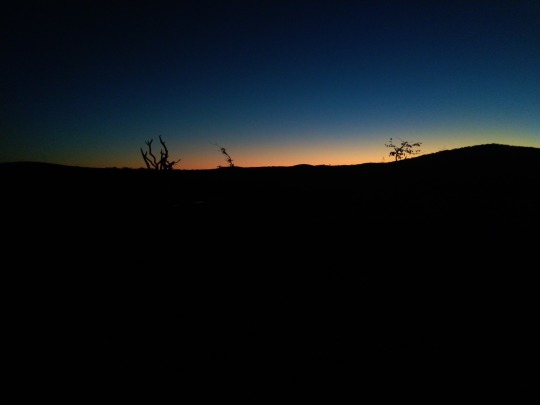
Closing the Chapter on ORYCS: A Successful Project with Impactful Insights
The ORYCS research project recently concluded with a dynamic final workshop, bringing together stakeholders, researchers, and educators. A brief reflection on the project's highlights, collaborative efforts, and practical outcomes.
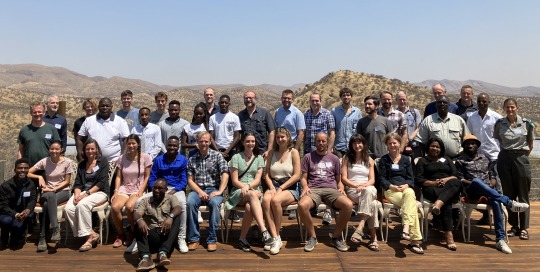
The final workshop showcased ORYCS's key findings and innovative approaches. Stakeholders actively engaged, offering valuable insights and steering discussions. The workshop encapsulated the spirit of knowledge exchange that defined ORYCS.
ORYCS prioritized practical impact through workshops and interactive sessions. Knowledge transfer efforts reached international students, community leaders and practitioners, bridging the gap between research and application.
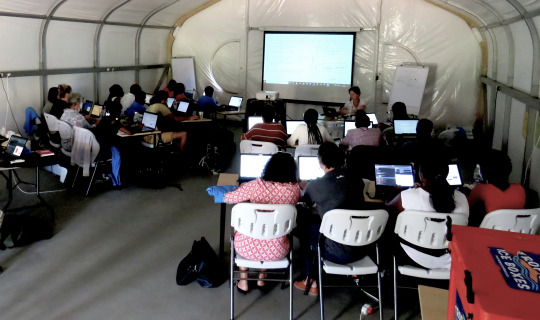
ORYCS made a mark in academic circles with numerous scientific publications, contributing to ongoing discourse and providing a foundation for future research. Graduate students and researchers thrived within the project, producing impactful theses and contributing to diverse disciplines.
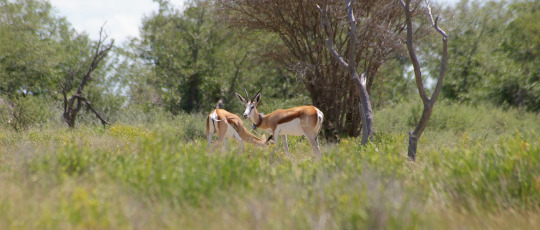
As ORYCS concludes, it leaves behind a legacy of collaboration, knowledge, and practical outcomes. The final workshop and the project as a whole exemplify the positive impact of research on land use management, setting the stage for future endeavors.
0 notes
Text
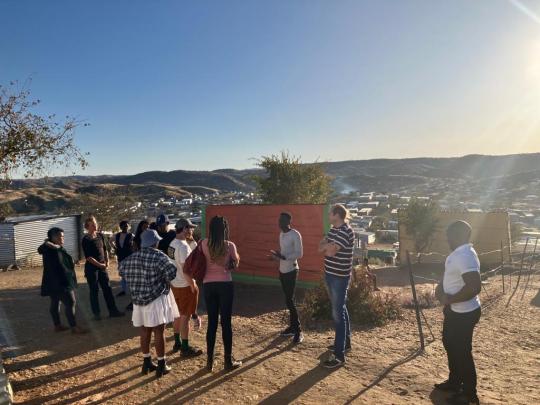
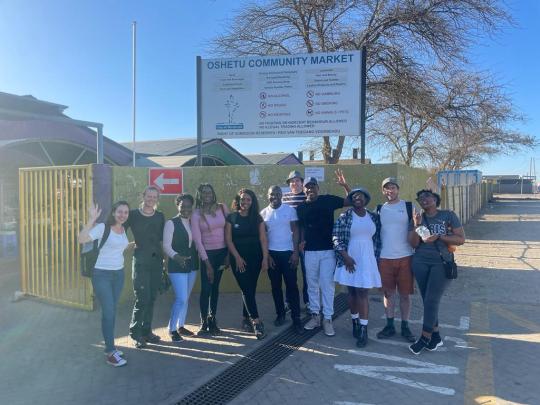

Working together in inter-cultural teams!
In academia we are so used to the fact that team members and colleagues have various cultural backgrounds that we often forget about the potential issues this difference may imply.
From August 15th-18th we finally managed to have our respective short course on "Intercultural competencies and communication" at HEJA Game Lodge / Windhoek, Namibia. Our coaches Ben Schernick and Wendy Huschfield from Co-Create Change Consultancies guided participants from different countries through an inspiring and insightful week.
0 notes
Text




What are they doing? Observing antelope behaviour. Training the algorithms.
In ORYCS, we’re using GPS-ACC collars on several antelope species. From this, we gather not only their current position and hence movement (from GPS fixes), but we also gather a ton of accelerometer data. This ACC data can help identifying what exactly an animal was doing at a certain time or location from its head and neck movement patterns. However, before being able to analyse the data, ORYCS researchers need reference data sets from animal observations to train the respective algorithms for pattern recognition.
For this, we collared three antelope species on the Sophienhof farm near Outjo. The behavior of three springboks (Wilma, Berta & Gisi), one Eland (Elena) and one Kudu (K-500) was observed by the ORYCS students Anna and Jakob from University of Potsdam alongside with Milka and Matthias, two students from NUST (Namibian University of Science and Technology). While our collars constantly collected 3-dimensional acceleration data they collected the respective observational data to be used to train machine learning algorithms to characterize and quantify behavior of the three antelope species. This data can now be used to identify animal behavior remotely.
The ORYCS students went out in the field every day at around 7:30 am and searched for the collared animals using telemetry. Milka, Matthias, Anna and Jakob then filmed the animals and noted their observed behaviour to afterwards classify the behavior using the software „Boris“. Our ORYCS students usually stayed in the field until sunset except for a lunch break to avoid the midday heat. They spent a total of two months on the farm and gained some interesting insights about the savanna, farm life in Namibia and most of all fieldwork with antelopes. For Anna and Jakob, coming from Germany, it was fascinating to see the landscape change from a yellow, brown and dry appearance on their arrival in spring to a green leafy one on their departure in summer.What are they doing? GPS-ACC collared antelopes on Sophienhof, Outjo
0 notes
Text
All good

For more than one year this kudu cow is part of our research project and she is just fine. The kudu provides us with deep insights into her daily routines. For instance, we can learn how often she visits water points in the course of the year. You can explore yourself in this video. Every time the kudu visits a water point the blue dot pops up. Ten seconds of video show one month of movement data.
0 notes
Text
(online) Annual Meeting & Stakeholder briefing 2021
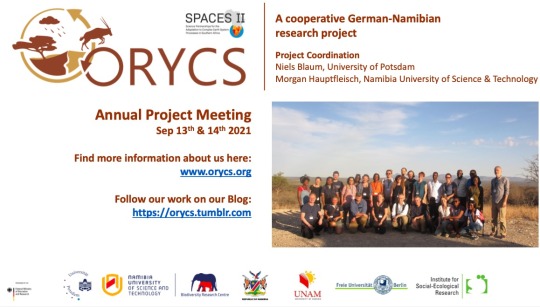
Again, Covid forced us into having several of our planned meetings online-only. So it happened that we had an online annual meeting and stakeholder briefing in September 2021.
After having missed a lot of the planned field work in 2020, we could now meet not only to plan ahead but also, to discuss our results from the successful field work in 2020/2021 that could take place irrespective of lockdowns and travel restrictions. And it was a lot!
We have e.g. learned about movement of wildlife, its interaction with the landscape and fences, human-wildlife-interactions, plant responses to wildlife activities, simulation of savanna vegetation and wildlife and much more.
Finally, a couple of days after our internal annual meeting, we have invited dozens of Namibian stakeholders to brief them on ORYCS progress and results. We felt honored by the numerous people showing interest in our work and enjoyed the joint discussions.
We do hope a lot that our final project meetings in 2022, especially those with Namibian experts, decision makers and land users can take place in person in Namibia.
0 notes
Text

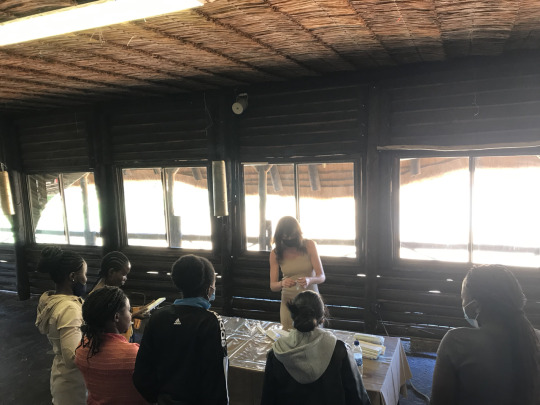



ORYCS short course "Introduction to Ecological modelling"
From Nov 21-27 2021, a team of supervisors from Potsdam and Berlin took a break from the German winter and met with about 20 participants from Namibia, South Africa, Zimbabwe and Germany at the HEJA Guest Lodge near Windhoek, Namibia to teach an introduction to ecological models. Participants learned the programming language NetLogo, conceptualizing ecological models, implementing and last but not least testing and analysing them.
The class was great fun and we're hoping to repeat something similar soon!
0 notes
Text
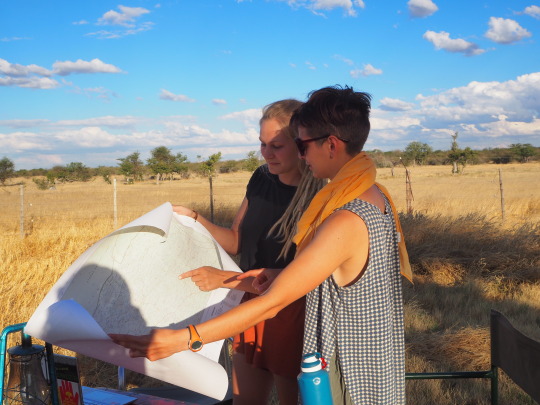
Ecological research? We start from the people!
Hi there! Here are Manjana and Alice two master students. We are in the Orycs study area interviewing farmers to get more knowledge on the social-ecological part of the project. We already visited 18 different farms: commercial and communal, with different management types such as cattle or sheep farms, game hunting farms and tourism as well as a mix of these.
With our questionnaire we ask farmers about their perception of wildlife, local knowledge about biodiversity and policies that affect their activity. This will help to better understand the social-ecological dynamics.
It’s really interesting to listen to different opinions and perceptions of natural and social aspects in this area.
In the beginning, it was a bit difficult to contact the farmers and get an appointment, but the more you meet them the more contact we got and many farmers were really nice and willing to help.
12 interviews to go and then we will have the data to analyze for our master thesis! Wish us luck!
0 notes
Video
Bokkie on the move
One and a half years ago the ORYCS team collared the first springboks and they are providing deep insights into their lives still. Today we show to you the tracking data of one female with some interesting behaviors.
In the beginning, during the drought of 2019, our springbok ewe regularly switched waterholes but was bound to them in radius of around five kilometres. The long lasting drought ended with some good rains in November 2019, vegetation started to green up and the ewe was unleashed from the waterholes. She and all others of our collared springboks gathered together in a riverbed area where the long-awaited fresh quality forage occurred first. After around three weeks the energy budges were filled up again, so that each springbok group could take off to their green season grassland fields. While some returned to the area of their home waterhole, others traveled around 50 km in a day to the sweet grassvelds South-West of the Etosha pan. Our ewe spend the peak of the green season on a panveld close to her home waterhole. Surprisingly, once the subsequent dry season started, she went on a 30 km excursion, direction Etosha pan, likely to find some good feed. From there she returned to her dry season area where she was bound to the waterholes again. This time, with some good energy reserves and a recovered plant layer, the need to move away from the waterholes was low and our springbok ewe did not moved further than three kilometres away from a waterhole. Finally, during the begin of the current wet season, she explores different areas in the search for some good quality food, not returning to the riverbed where she started last green season (yet?) and keeping us curious what will happen this green season.
The video gives a small insight into the movement data we receive from the GPS-collars. The graph in the bottom right corner will show you the actual distance the ewe had to the closest waterhole. Once she visited a waterhole a blue point appears in the bottom row of the graph. In the background you see the vegetation greenness measured at the springboks locations by the MODIS satellite. You see one and a half year movement data in one and a half minutes.
Enjoy.

The springbok ewe on her green season grassland.
1 note
·
View note
Photo

After Namibia has re-opened its boarders and cases of COVID-19 infection are decreasing currently, our PhD student Tim Herkenrath togehther with former NUST MSc student Kaarina Shilula grasped the opportunity to resume our studies at Etosha Heights Private Game Reserve in order to diminish the negative impact of an interrupted field season to the greatest extent possible. A long-term experiment was set-up last year already to measure sap flow densities as a proxy for water use in mopane trees (Colophospermum mopane) under different degrees of simulated leaf browsing. First results provide good evidence that individuals, which have experienced a decent level of herbivory, show a reduced amount of water use (see 3rd Newsletter).
Apparently, a decreased amount of water that is taken up from the ground by plants is likely to affect soil moisture contents. This link will be examined during the next step of our study in more details. Right now, we are installing soil probes that measure sub-canopy soil moisture content in 6 different depths. Even though drilling holes in a dry African Savanna is quite strenuous and sweaty, we are now curious to obtain first promising results as soon as wet seasons begins. Furthermore, we are particularly interested in potential feedbacks between altered soil moisture conditions and germination success of grasses. In addition, the start of the rainfall season will enable us to explore even more aspects of water use strategies of mopane and how these might change in response to herbivorous pressure. Thus, we are keen to conduct a variety of analyses including stomatal conductance measurements, pressure-volume curves and isotopic analyses of xylem water during the following weeks. These results together with sap flow and soil moisture data will provide further profound insights into consequences of mammalian herbivory on tree water use and its relevance for vertical water fluxes and ecosystem functioning at landscape level. Our findings will contribute to the main objective of ORYCS, which aims to assess chances, risks and sustainability of wildlife based land-use in Namibian savannas.
1 note
·
View note
Link
A perspective on conservation and ecological research questions in the context of Namibias environment by John Mendelsohn.
A strong statement for basic ecological research in times where obviously we all need solutions - and fast.
And ORYCS is chasing right after some of the risen key questions.
0 notes
Video
ORYCS PhD student Robert Hering giving some insight in his amazing PhD project on feedbacks between large herbivores and their savanna environment. His work is centered around the gps colarring of different antelope species.
Note: The Video was produced for the SPACES II mid-term-meeting
1 note
·
View note
Link
ORYCS in the newspaper
The "Potsdamer Neue Nachrichten" had a feature on ORYCS in one of their recent Science reports. Note: The article is in German.
0 notes
Text
ORYCS Annual Meeting 2020 – online but all fine
On October 5th and 6th, just a couple of days before the SPACES II MTM, ORYCS held its first annual meeting after the project kick-off workshop in 2019. Originally, this meeting was planned to take place this summer at the University of Potsdam in Germany. But given the circumstances, it had to be postponed and go online – like almost everything else.
After a rather exhausting meeting on COVID implications and adaptations earlier in the year, our idea for the 2020 annual meeting was to focus on the fun parts of our work, on research results and constructive research planning. And that is what we did:
All ORYCS PIs and a whole lot of students from Namibia and Germany gathered for two half days and presented their results and exchanged ideas. After all we were surprised how enjoyable the meeting – although online – still was and how much of the team spirit did come across during this pandemic-style event.
However, we also all agreed that we’re really looking forward to the next physical meeting which is scheduled for May 2021 in Namibia. Hopefully it will take place after some successful months of joint field work in the beautiful Namibian savanna.
Authors: DL & KG

0 notes
Text
ORYCS places GPS collars on 29 more animals in Etosha National Park and surroundings
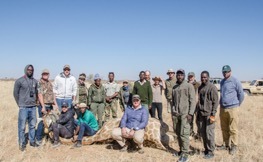
ORYCS’ scientists Morgan Hauptfleisch and Mark Jago led an intensive wildlife capture and collaring exercise in the Etosha-West study site. The ambitious activity was made possible through close collaboration between NUST’s Biodiversity Research Centre (BRC), UNAM’s School of Veterinary Medicine, Potsdam University, the Ministry of Environment and Tourism, the Etosha Ecological Institute (EEI), the Giraffe Conservation Foundation (GCF) and Etosha Heights Private Reserve.

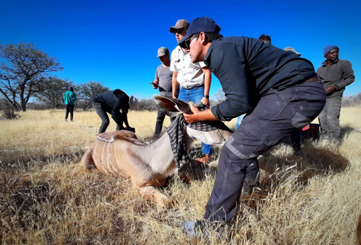
The 11 eland, 11 kudu and 7 giraffe were fitted with satellite collars on the national park, private nature reserve and mixed-cattle-and-game farms. The data they produce will enable ORYCS to test the hypothesis that movements will be affected by the different land-unit sizes and management, in turn affecting ecological feedbacks differently.
The state-of-the art giraffe ossicone satellite units were sponsored by GCF and there are now nine ORYCS giraffes being tracked. The giraffe data will also form part of an Africa-wide study on the movement of nearly 200 giraffes of all four species.The capture also provided hands-on experience for six final year UNAM veterinary students and two NUST students in the capture and immobilisation of wildlife.
It further resulted in a six documentary episodes (Episodes 38 to 43) of the Namibia Conservation First: Covid Chronicles which created a lot of public exposure and could serve as educational videos for use in universities.
Thanks to Ultimate Safaris and Simon Retief for photos
0 notes
Text
Paraecologists start data collection on predators
A total of 39 GPS tracking devices have now been deployed in Etosha Heights, Violugia (mixed cattle and game farm), and Etosha National Park. The species we have tagged are springbok, giraffe, kudu and eland. One of the research questions centres around what causes the species to use some areas more than others, and behave differently in different areas. An obvious driver which is being studied is the vegetation and habitat characteristics. Since our study area has a large density of large predators, an obvious relevant parameter is the presence of lion, hyaena, leopard and cheetah. Areas which might offer nutritious grazing for herbivores might be within an area with a high density of carnivores. This “landscapes of fear” factor should also be factored into the equation.
To determine frequency and locality of predators across the study area, the help of citizens who reside and work in the area has been obtained. We have titled them paraecologists, and have equipped and trained them to collect large carnivore activity within our study area. The app Epicollect was used to create a data collection form that can be easily used on smartphones.

ORYCS provided geo-able smartphones to paraecologists without smartphones. Farm managers, game guides and anti-poaching operatives are currently collecting data as part of their duties to integrate with the ORYCS models on herbivore movement and activity. Data are then quality-controlled at NUST’s Biodiversity Research Centre. This is a cost effective and mutually-beneficial solution which involves the stakeholders, making the science of the project more real and understandable.
1 note
·
View note
Text
ORYCS during the Covid-19 lockdown
Only a few months back, a good amount of our German as well as Namibian ORYCS members found themselves together in the beautiful Otjikoto Nature Reserve in Namibia to work on statistics and experimental design together, unsuspectingly of what happened only a day after we said goodbye to each other. When the travel ban due to the Covid-19 pandemic was announced, it hit us like a meteor. Cancelled flights, closing borders, hourly changing information. Luckily, after some complications and detours, we all managed to return safely to Germany.
But even back home, our everyday life was not the same as before. One of the main activities shaping our daily routine, going to the office, was no longer possible. Corona has inexorably transformed the way we work. We meet people sitting on our desk at home via Zoom, Discord or similar services, attend conferences and workshops online and use new technologies to collaborate.
As a modeler, I thought my work would not be as threatened as the work of people in other workpackages that heavily rely on getting data in the field. Besides, we spend most of our days in front of the computer anyway. Turns out, even we can’t build reliable models without getting some input from field measurements and even a modeler can get bored of only staring at a screen all day and a work life that has become 100% virtual.
We are lucky to live in times where technology allows us to continue work safely, however, most of us also realised the importance of working physically together, leaving the house in the morning, going to a place where work stops after you close the office door and that technology will never completely replace human contact. I hope we all overcome the challenges of working from home and that we can meet again in Namibia next year! (Author: Katja Irob)

0 notes
Text
Simulations of the savanna
In order to understand wildlife impacts on the ecosystem level and how they are influenced by human interventions, ORYCS is focusing on wildlife movements. Where do antelopes move and why? How does it depend on land use measures like fencing, provision of water and others?
To tackle this ORYCS work-package one is working on simulation models tackling the above-mentioned issues on different levels. The figures below show first results of our agent-based animal-funtional-type model.


But wildlife movements are not about wildlife only. They are strongly dependent on vegetation - of course. Hence, we currently adapt an existing savanna vegetation model (Synodinos et al 2015) to simulate biomass dynamics of woody plants (mainly Mopane) and grasses for our study area (see the gif below for simulated biomass production on Etosha Heights Game Reserve for four virtual year).

0 notes